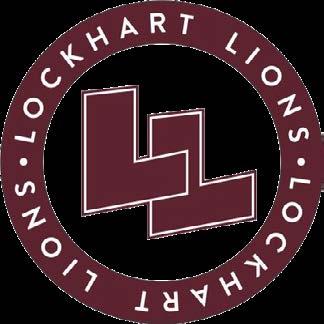

LOCKHART ISD BORCHERT LOOP
ELEMENTARY SCHOOL
USER MANUAL

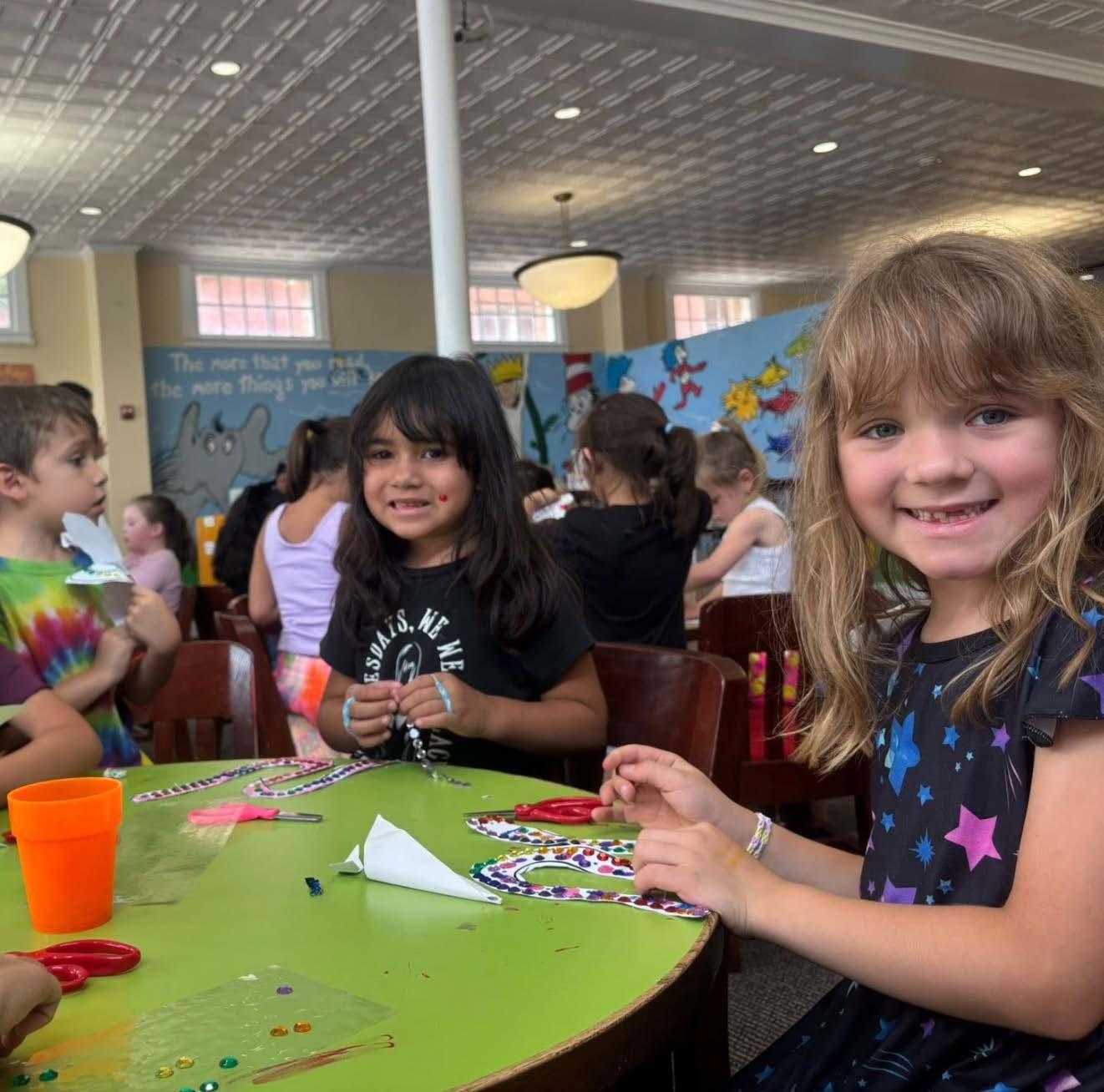
TABLE OF CONTENTS
Introduction
Design Process
Site Plan/Floor Plans
Pedagogical Foundations
Classroom Wings
Collaboration
Active Blended Core
Fine Arts
Design Lab
Robotics/Science Lab
Outdoor Learning
Athletics
Safety & Security
Brand Identity

INTRODUCTION
Welcome to Borchert Loop Elementary School in Lockhart Independent School District, a school collaboratively designed to support actively engaged learners. Modern learning spaces offer students the ability to learn in a variety of areas. Moreover, flexible spaces allow teachers to design experiences that foster collaboration, innovation, and creativity, and hands-on active learning.
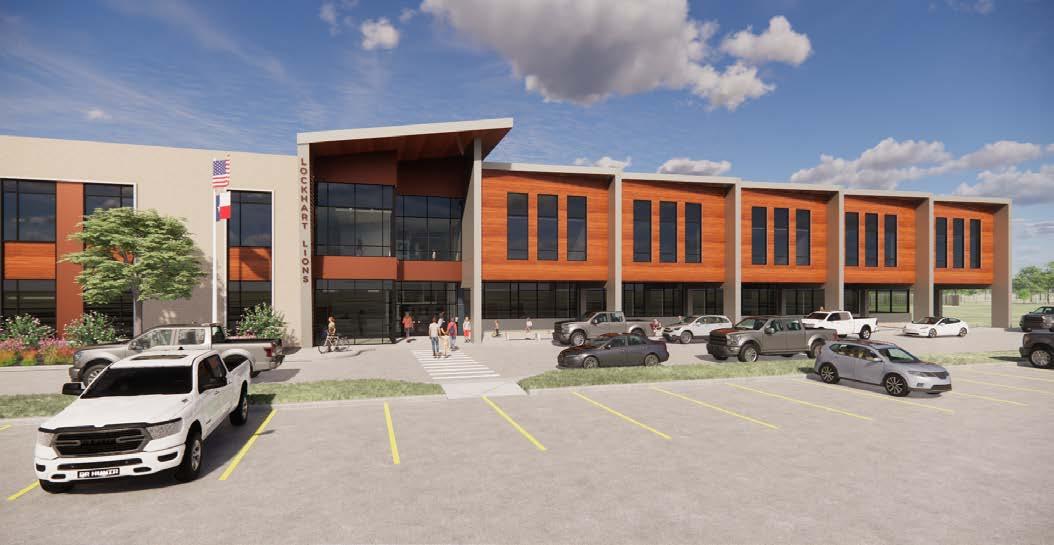
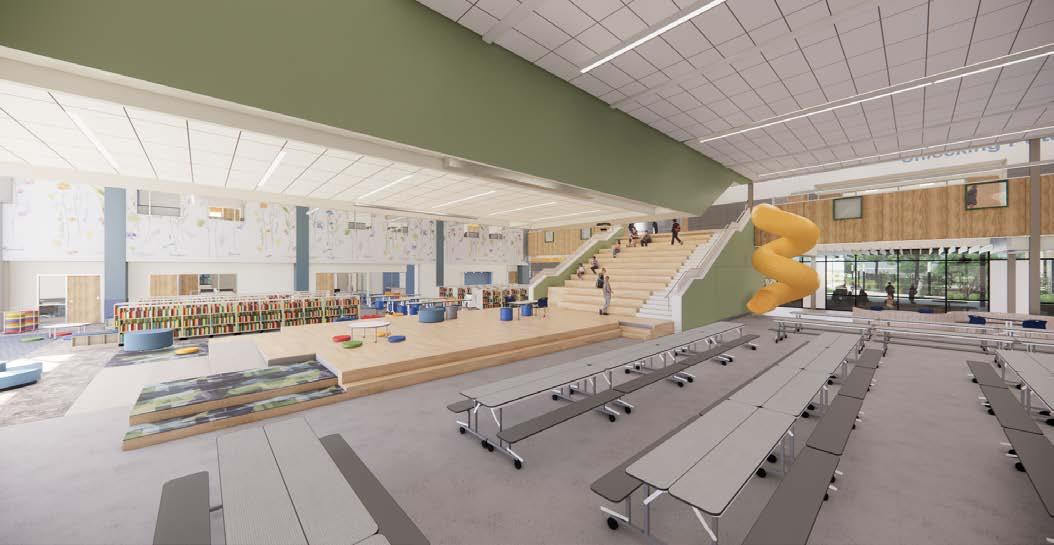
This User Manual will benefit the campus leadership and staff who will educate children in this elementary school environment. This manual includes a description of the design process, building design, and suggestions as to the use of the innovative spaces that have been purposefully designed into the building for instructional purposes.

DESIGN PROCESS
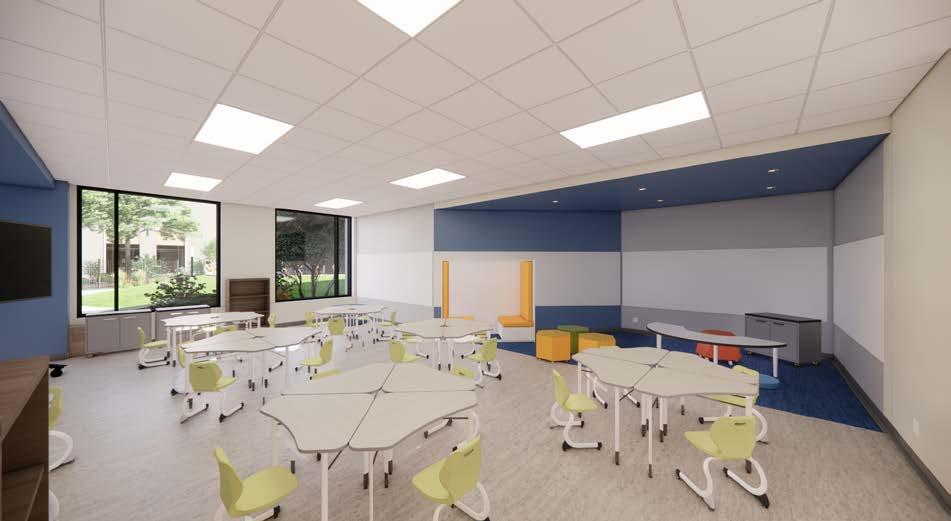
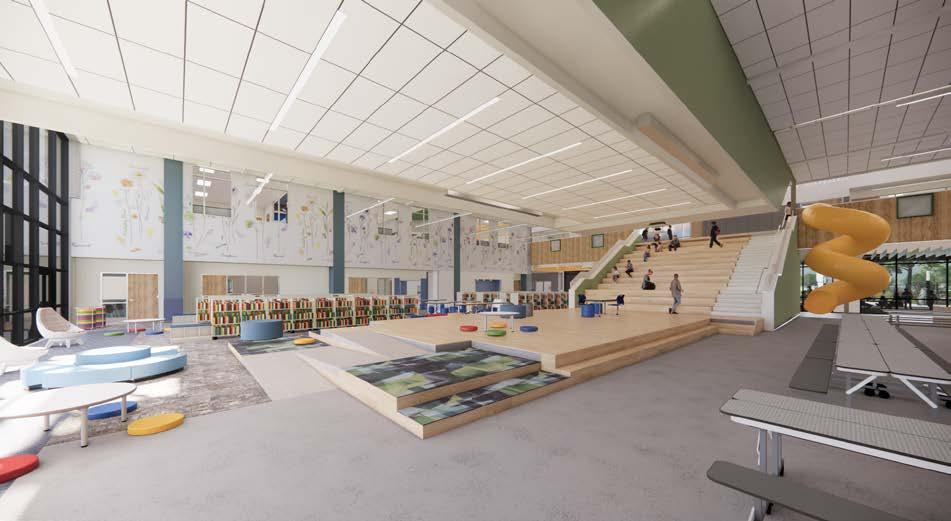

The design of Borchert Loop Elementary School emphasizes transformative learning by creating dynamic spaces that promote flexibility and adaptability, supporting a wide-range of teaching methods and student needs. These spaces are equipped with cutting-edge technology, ensuring that students have the tools they need to succeed in an ever-changing world. The design promotes an inclusive atmosphere of safety that encourages the social, emotional, and physical well-being of all staff and students.
The Library houses modern technology for student use, and is designed not only as a literacy resource, but for innovation and creativity. Grade levels experience collaboration areas, within each individual classroom, allowing teachers to have the flexibility to move students to the most conducive area for lessons, as well as have variety when deciding on student group sizes. Art, music, and P.E. have purposefully designed dedicated spaces for these specialized instructional areas. Additionally, multiple playgrounds offer age-appropriate socialization areas, as well as play equipment.
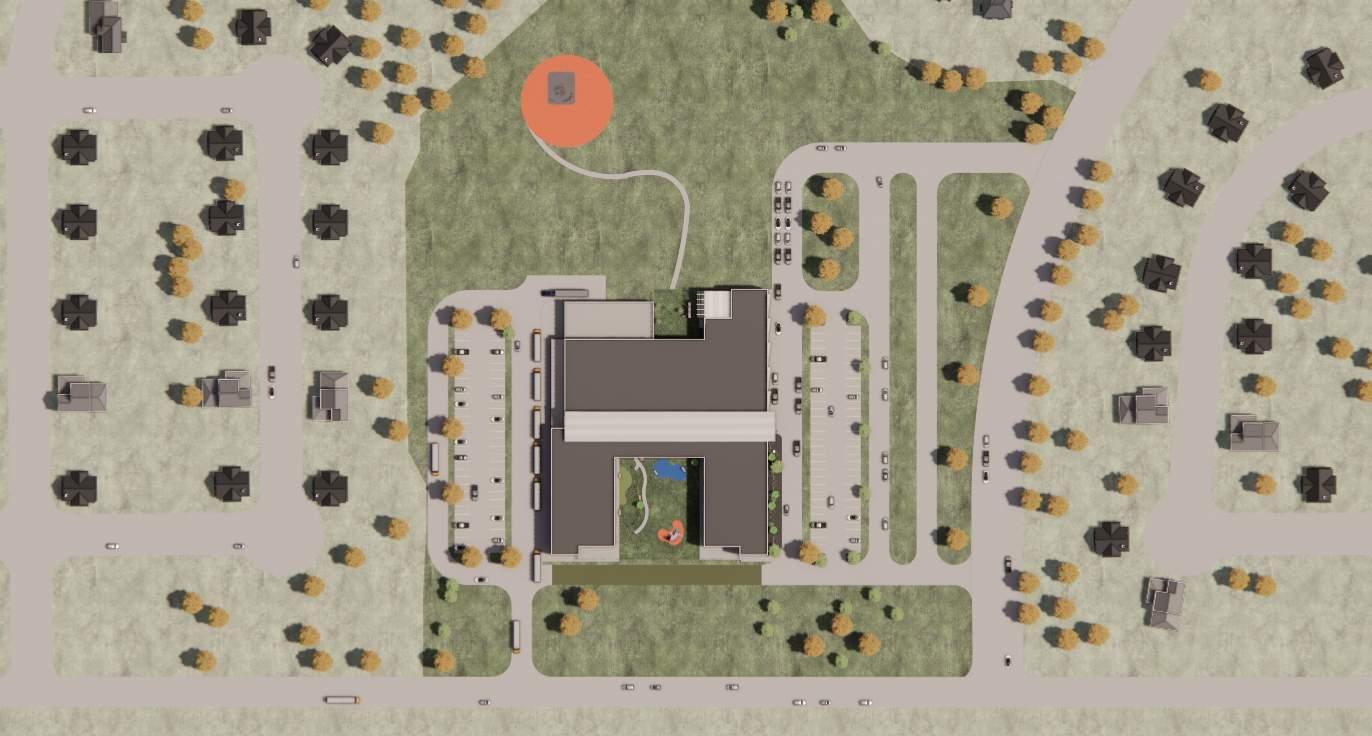









































FLOOR PLAN
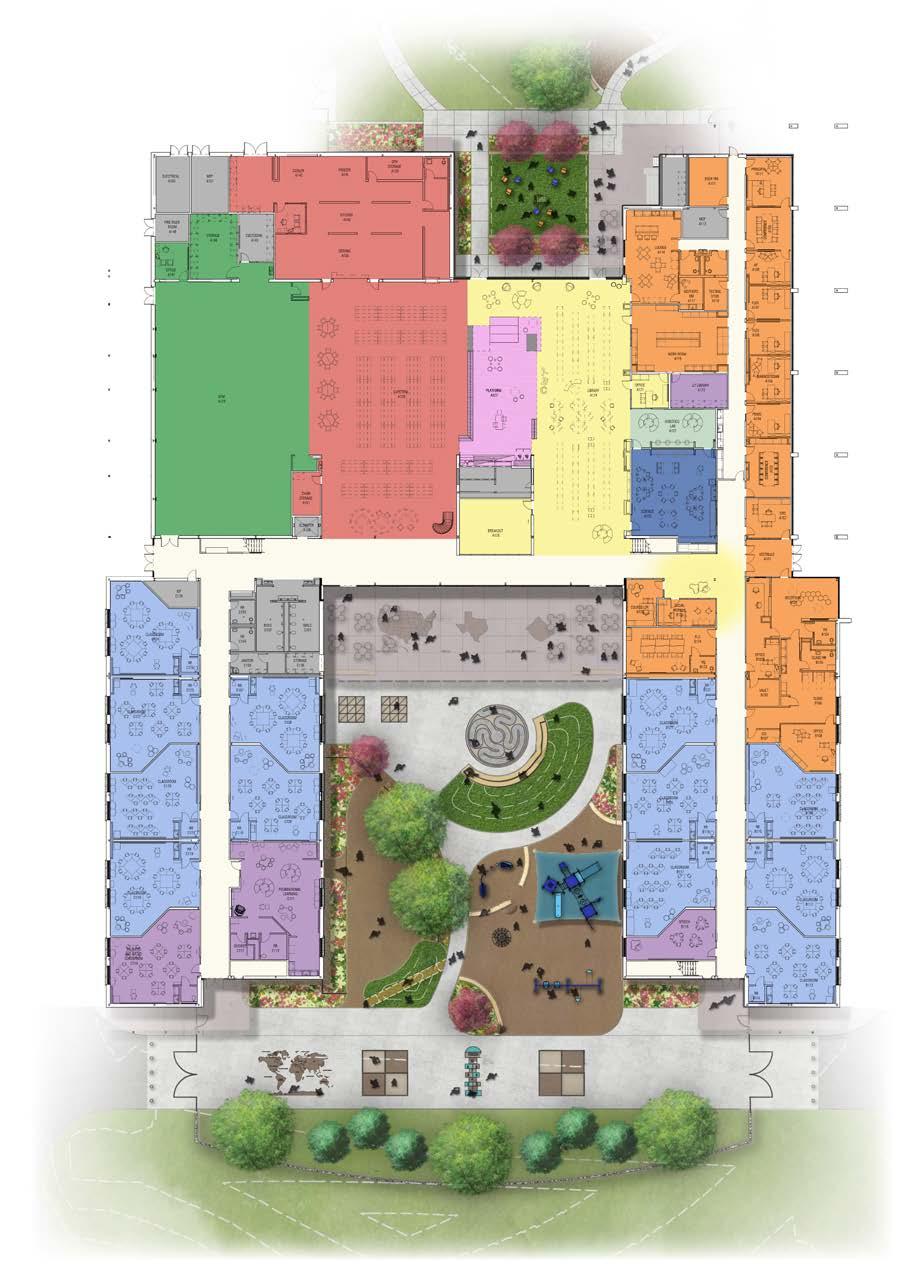
MAIN ENTRY
LEVEL ONE
ADMINISTRATION
ACADEMICS
SPED
LIBRARY /COLLABORATION
ROBOTICS
SCIENCE
FINE ARTS
ATHLETICS
CAFETERIA
SERVICE

FLOOR PLAN
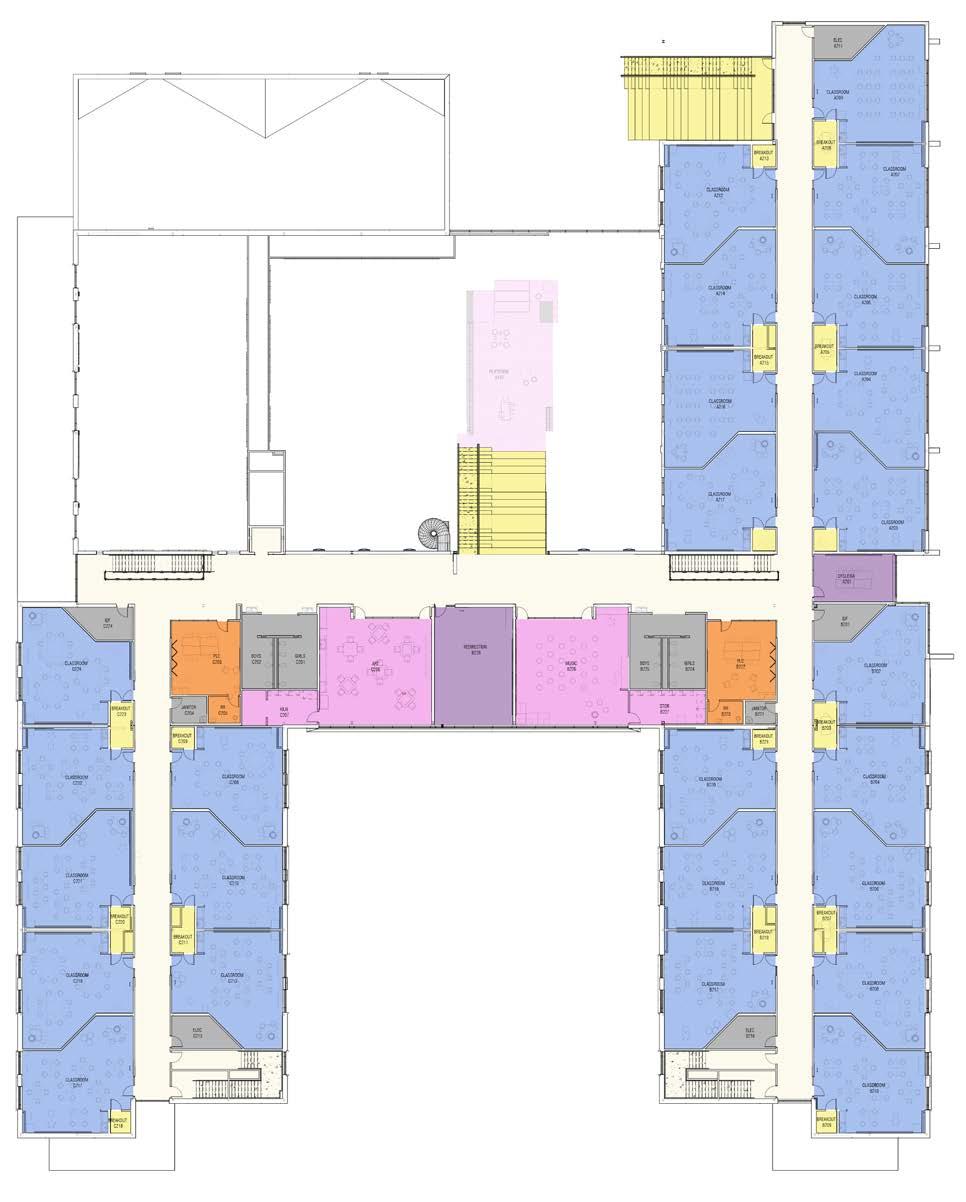
LEVEL TWO
ADMINISTRATION
ACADEMICS
SPED COLLABORATION
FINE ARTS SERVICE
PEDAGOGICAL FOUNDATIONS: GRADE LEVEL COMMUNITIES
The learning process is dependent on student engagement (Schlechty, 2002). When students experience a sense of belonging and support, they are more likely to engage authentically, make positive behavioral choices, and achieve deeper levels of learning (Osterman, 2000). Creating emotionally and physically safe environments is essential to fostering this growth. Small communities enhance engagement, by promoting strong peer and teacher relationships, cross-curricular collaboration, consistent behavioral expectations, and timely academic and behavioral support (National Research Council, 2004). Purposefully designed with the learner in mind, collaboration spaces provide flexible environments that promote peer interaction, inquiry-based learning, and choice. Collaboration spaces enhance learning by offering students opportunities to participate in hands-on, collaborative activities that support active knowledge construction (Piaget, 1952). Research shows that these environments not only improve focus, motivation, and productivity but also contribute to emotional well-being, positive socialization, and a sense of autonomy (Oliveras-Ortiz et al., 2021). When students learn in intentionally designed spaces that foster ownership, connection, and belonging, they experience higher levels of engagement and academic achievement (Oliveras-Ortiz, Bouillion, & Koprowski, 2023).
Schlechty, P.C. (2002). Working on the work: An action plan for teachers, principals and superintendents. San Francisco: JosseyBass.
Osterman, K. F. (2000). Students’ need for belonging in the school community. Review of Educational Research, 70(3), 323–367.
National Research Council. (2004). Engaging schools: Fostering high school students’ motivation to learn. Washington, DC: The National Academies Press.

Piaget, J. (1952). The origins of intelligence in children (M. Cook, Trans.). New York, NY: International Universities Press.
Oliveras-Ortiz, Y., Bouillion, D. E., & Asbury, L. (2021). Learning spaces matter: Student engagement in new learning environments. Journal of Education, 201(3), 174–182.
Oliveras, Y., Bouillion, D., & Koprowski, S. (2023). Social Emotional Learning Practices and Learning Spaces (p. 31). University of Texas at Tyler.
CLASSROOM WINGS
DESIGN FOR INCREASED STUDENT ENGAGEMENT
The plan includes five distinctive classroom wings creating small learning communities. Smaller learning communities offer many benefits, including increased student engagement, personalized attention, and stronger peer relationships. These wings play a crucial role in nuturing a strong sense of belonging and community.
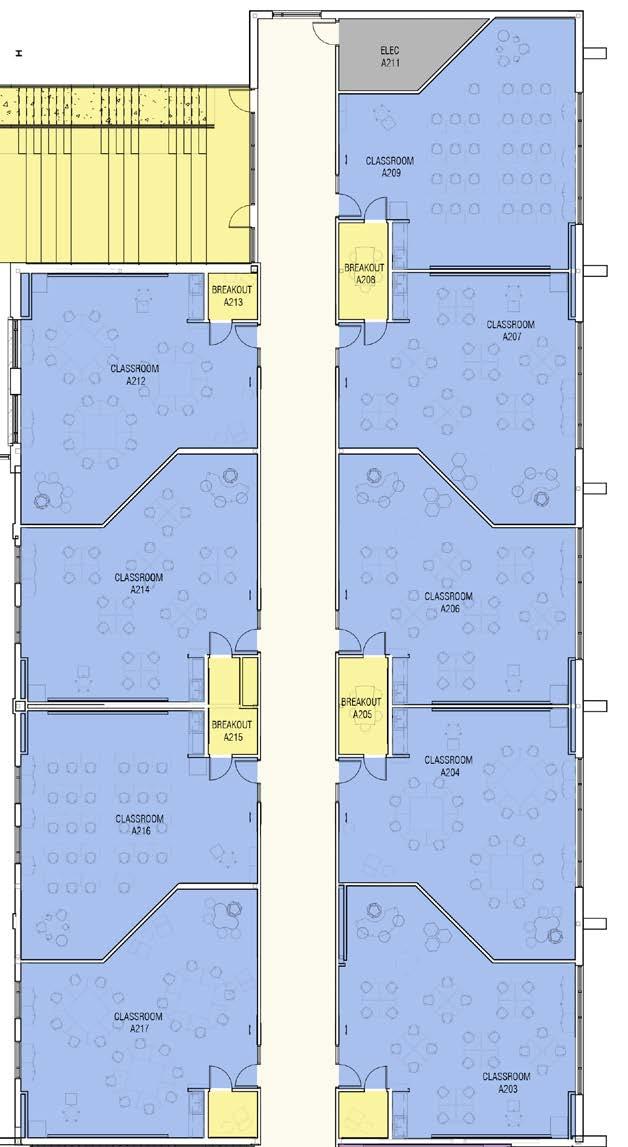

Learning Stair
CLASSROOM WINGS
CREATE SPACES
The Create space redefines the traditional classroom by offering a more flexible learning environment. Create spaces may include both wet and dry project areas, adaptable furniture, various writing surfaces (including mobile options), advanced technology, and ample natural light. Create spaces were intentionally designed to align with Lockhart ISD’s instructional expectations by integrating collaboration zones within each learning environment, fostering opportunities for individualized instruction and small group learning.
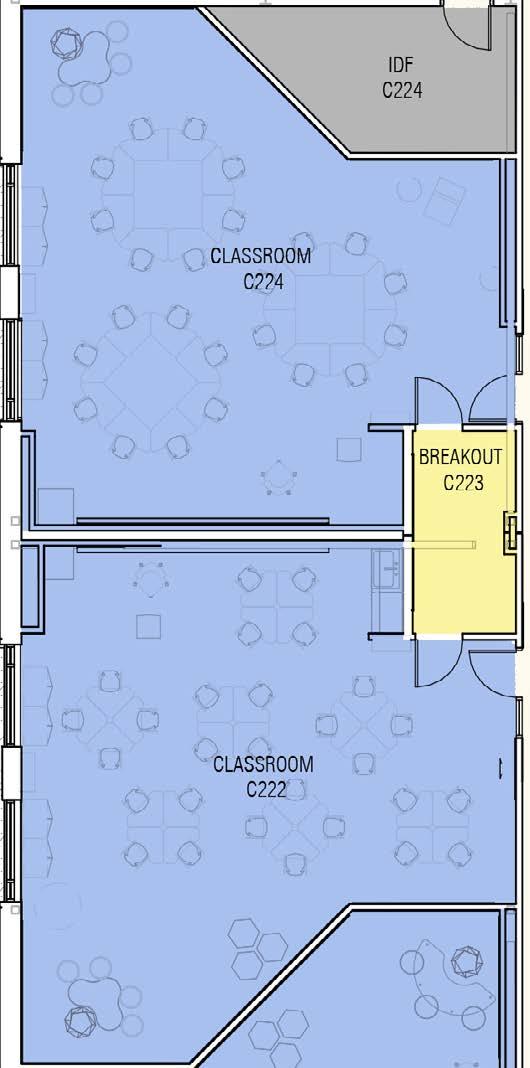

CLASSROOM WINGS
COLLABORATION SPACES - EXCHANGE
The two learning stairs are a focal point of the campus. They provide a flexible environment for students to work individually, in pairs, or in groups. These spaces also allow for large group presentations in either an indoor or outdoor setting.
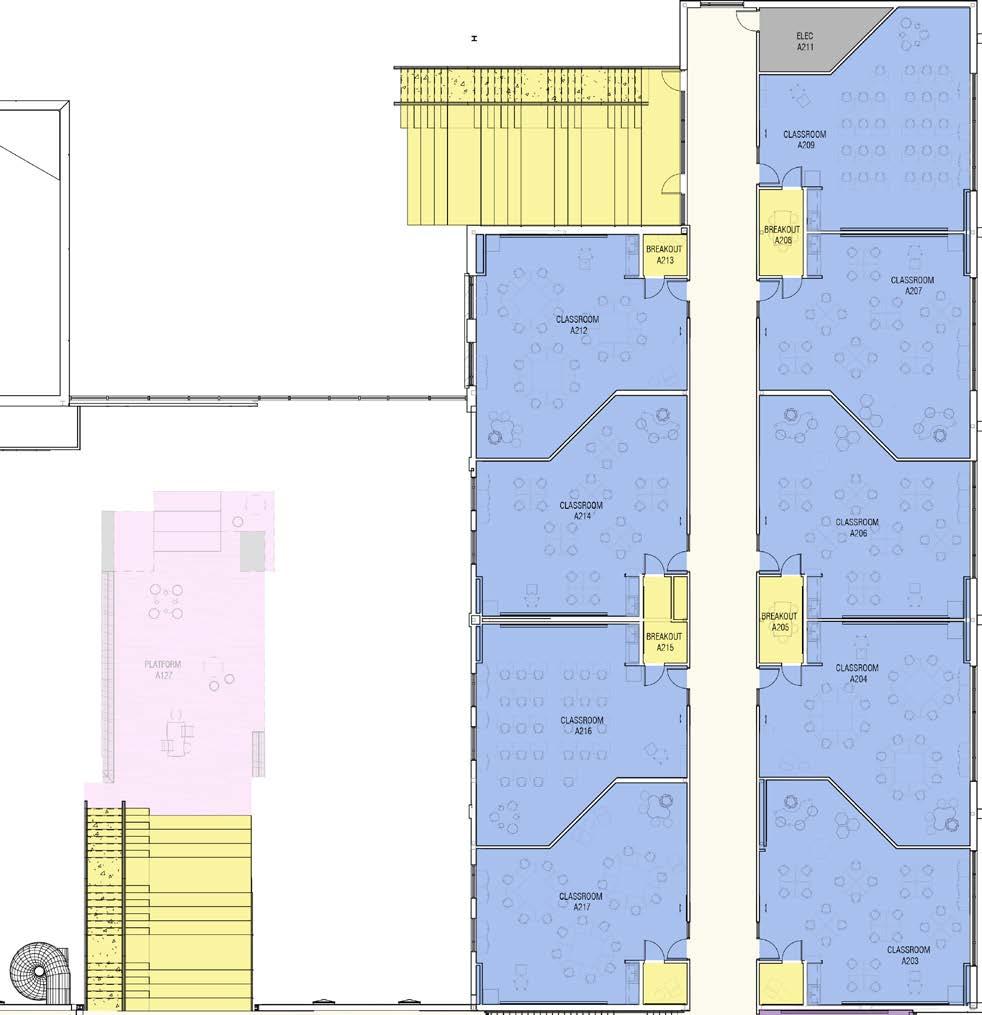
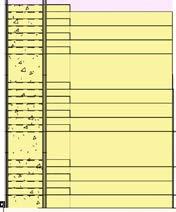

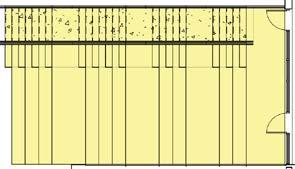
CLASSROOM WINGS
COLLABORATION SPACES - BREAKOUT/THINK
In the 2nd floor classroom wings are small breakout or Think spaces that facilitate learner-directed group work for 2-4 students. Think spaces are intended to be used by small groups and may contain flexible seating, white boards, digital displays, and power for charging devices.






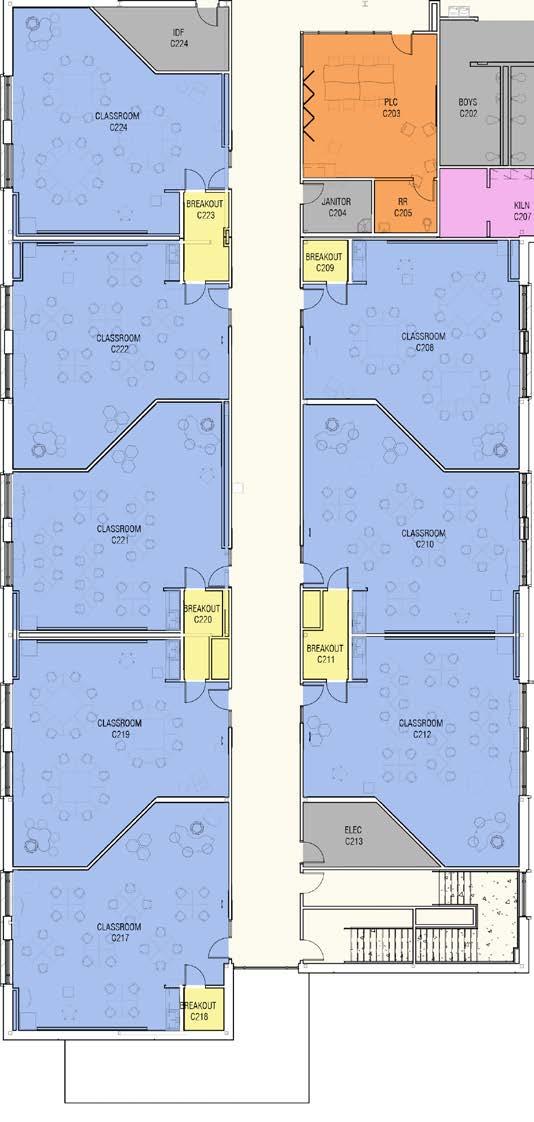
ACTIVE BLENDED CORE
The Active Blended Core, located along students’ daily path, seamlessly integrates the library, stage, and cafetorium into a flexible, multi-functional hub for learning and gathering. The library offers a technology-rich, inviting space with adaptable furniture that encourages collaboration and exploration, preparing students for a digital future. At the heart of this core is an open performance stage that connects the library and cafetorium, redefining the traditional stage experience. The stage is accessible from multiple points, including the library, cafetorium, and learning stairs, while a movable partition allows the adjacent gymnasium to provide additional seating for performances. A slide from the second story delivers students directly into the heart of the Active Blended Core, adding an element of reward, fun, and excitement. This playful feature not only sparks joy and movement but also reinforces the idea that learning spaces can be engaging, student-centered, and filled with moments of celebration.
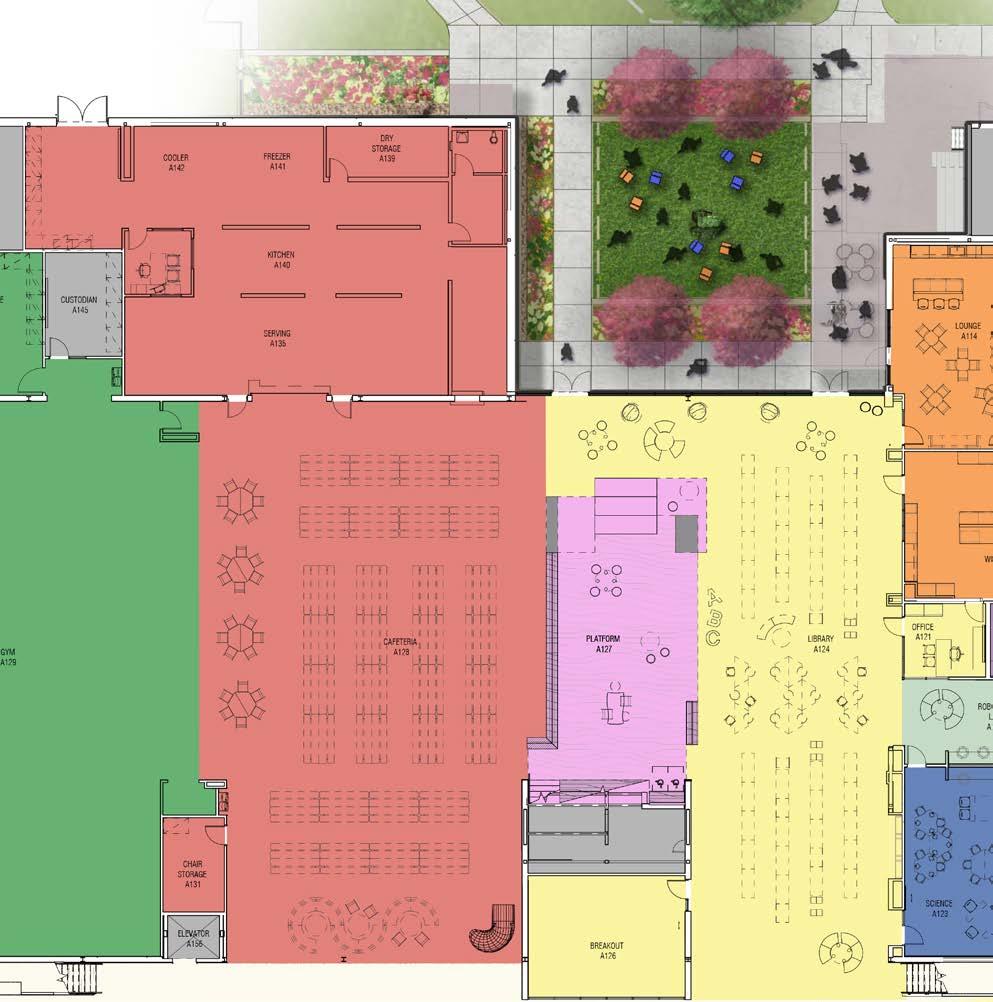

Cafetorium
Stage
Library
Gymnasium
FINE ARTS

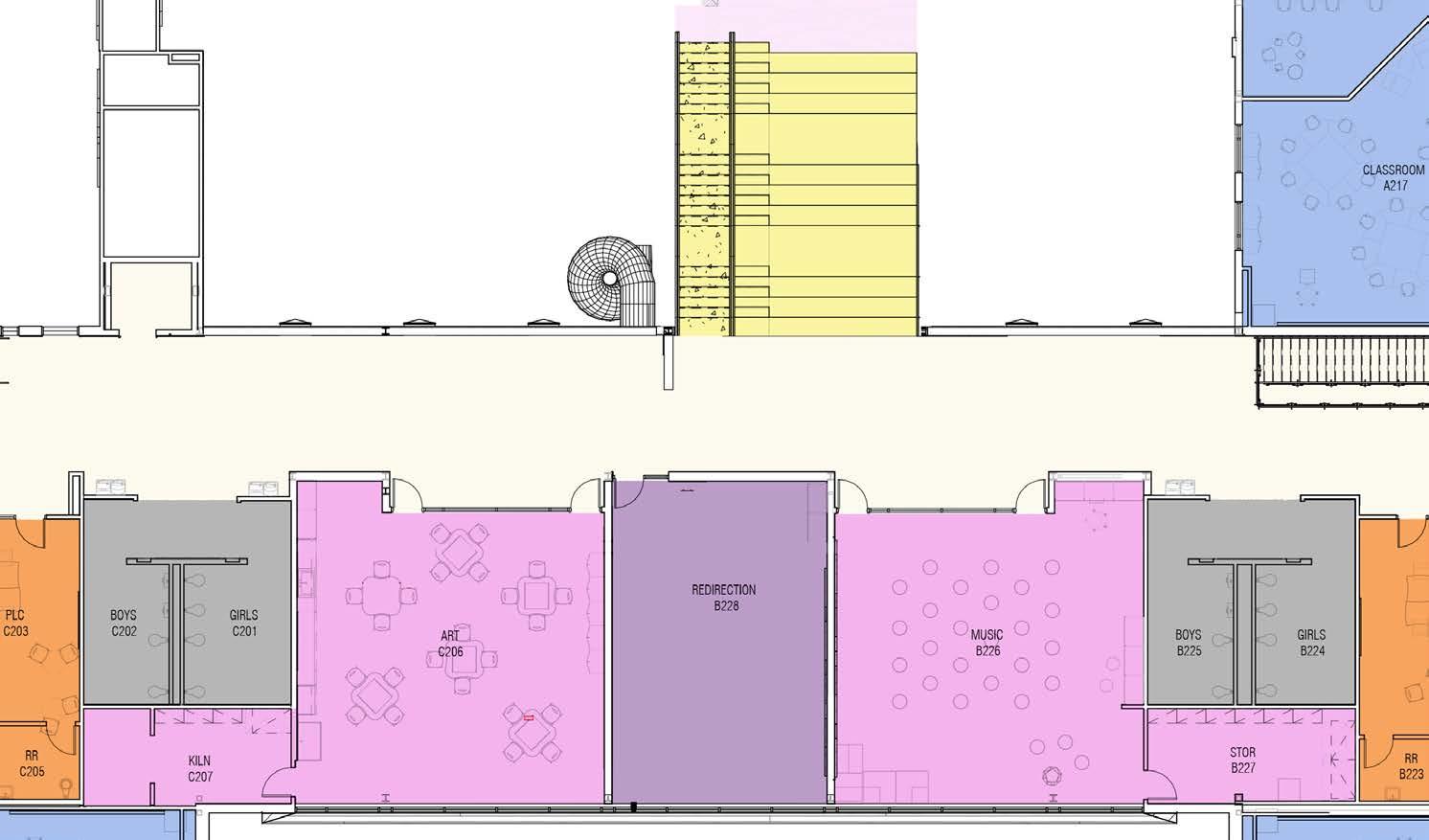
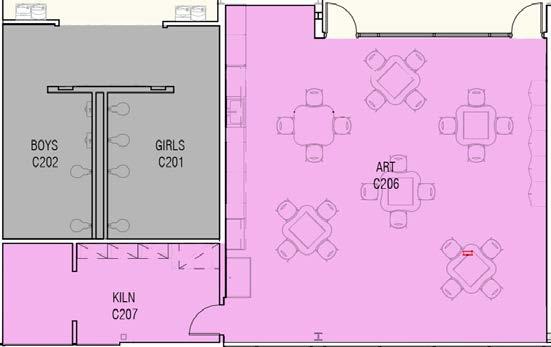
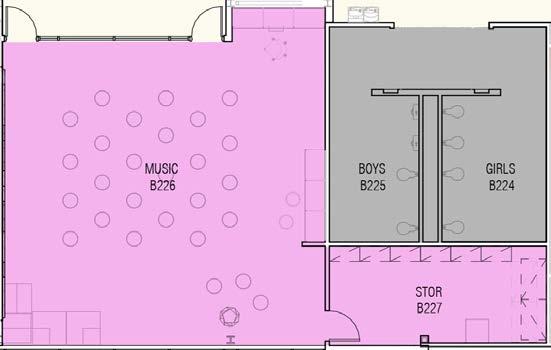
2ND FLOOR
The placement of art and music rooms on the 2nd floor allow them to have wall to wall windows overlooking the student courtyard. The music room is located at the top of the learning stair that connects directly to the performance stage below for quick access.

Stair
DESIGN LAB
DESIGN LAB/PLC
Distributed throughout the building are three Design Labs/PLC. The Design Lab serves as a place for instructional teams, designed as a space to support effective teaching and continuous improvement. This dedicated space empowers educators to engage in lesson planning, instructional collaboration, student progress monitoring, data analysis, and the sharing of best practices. The environment fosters a growth mindset and ongoing professional learning, ensuring that teams are equipped to meet the ever evolving needs of their students.
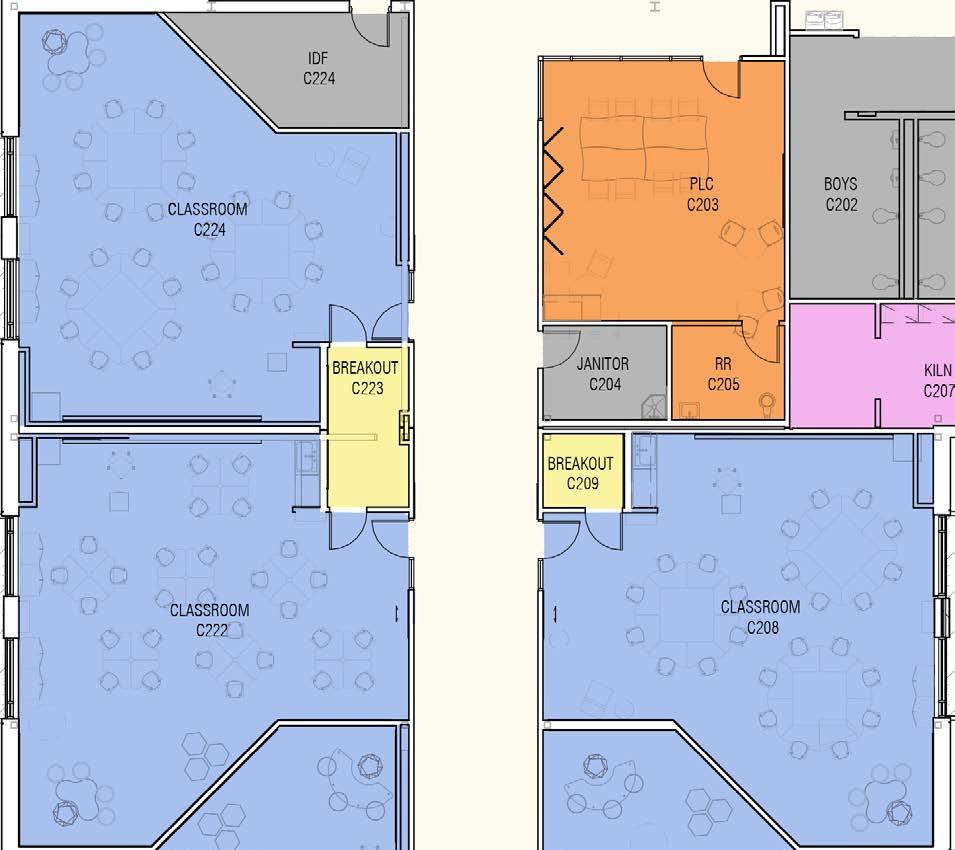
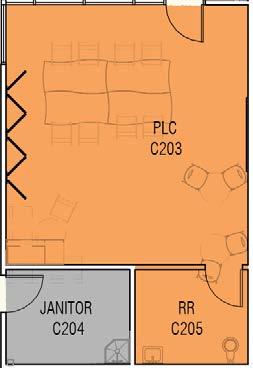

CLASSROOM WING
ROBOTICS & SCIENCE LAB
The science lab and robotics spaces connect directly to the library, which integrates these elements into the heart of the campus while blurring the line between academics and research. This placement also allows both programs to use the adjacent courtyard for experimentation.
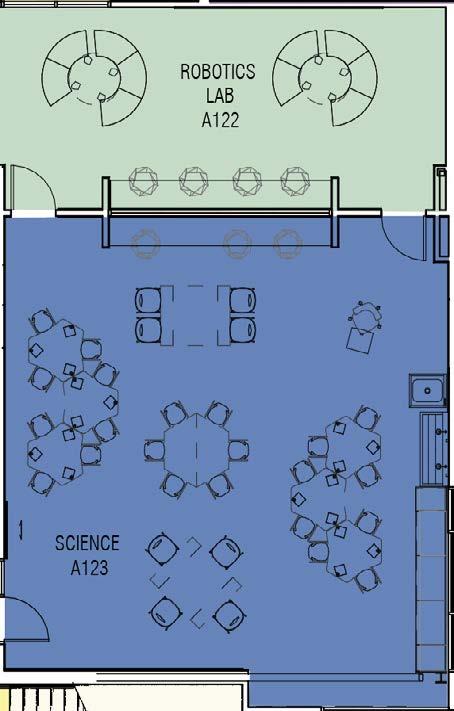
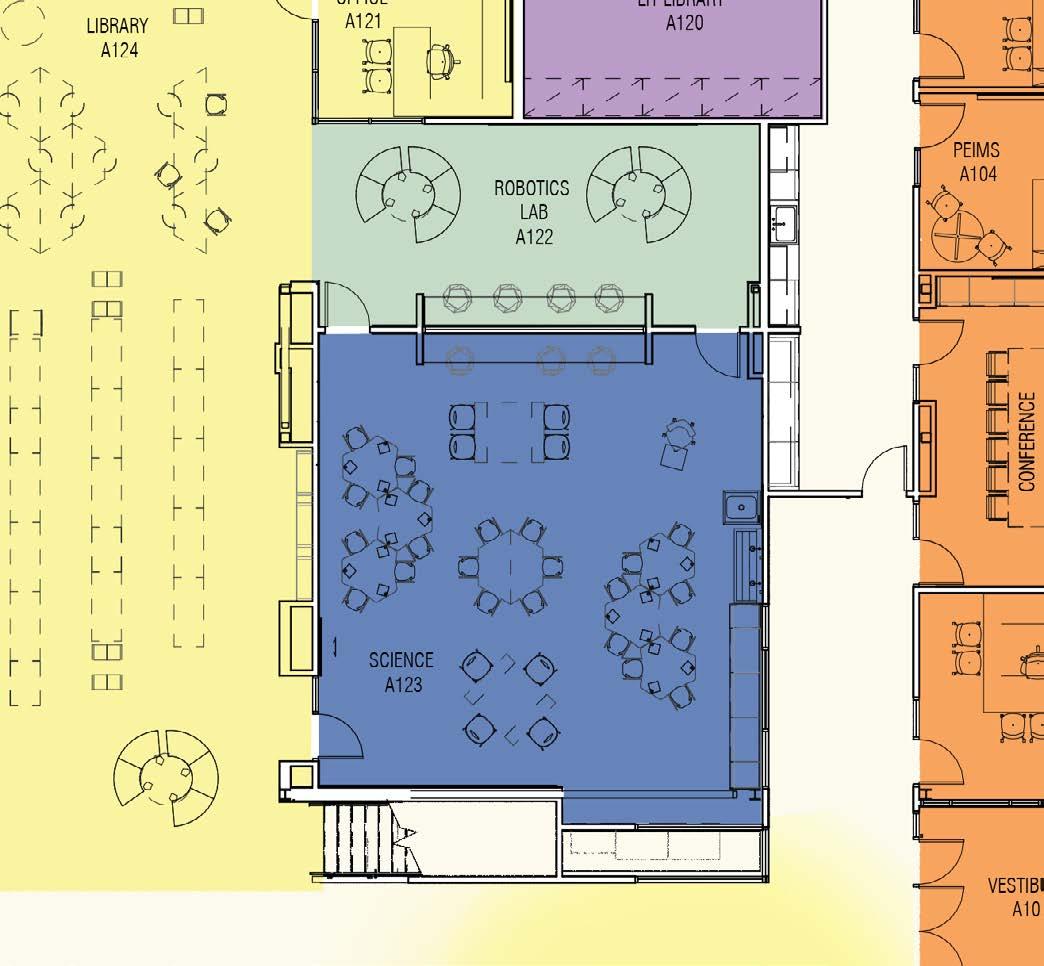

OUTDOOR LEARNING
COURTYARD
The enclosed central courtyard, functions as a secure, multipurpose outdoor environment designed to support a wide range of academic and creative learning experiences. Outfitted with mobile furniture, shared play areas, and an ampitheater, the space is ideal for performances, presentations, collaborative projects, and group instruction. Surrounded by glass, it floods the interior with natural light and provides intentional opportunities for outdoor learning, appropriate social interaction, and creative exploration. The integration of nature into the school environment supports the wellbeing and developmental needs of adolescent learners by encouraging movement, connection, and reflection. Its flexible design allows teachers to schedule time as needed, making it a valuable and adaptable resource throughout the day.
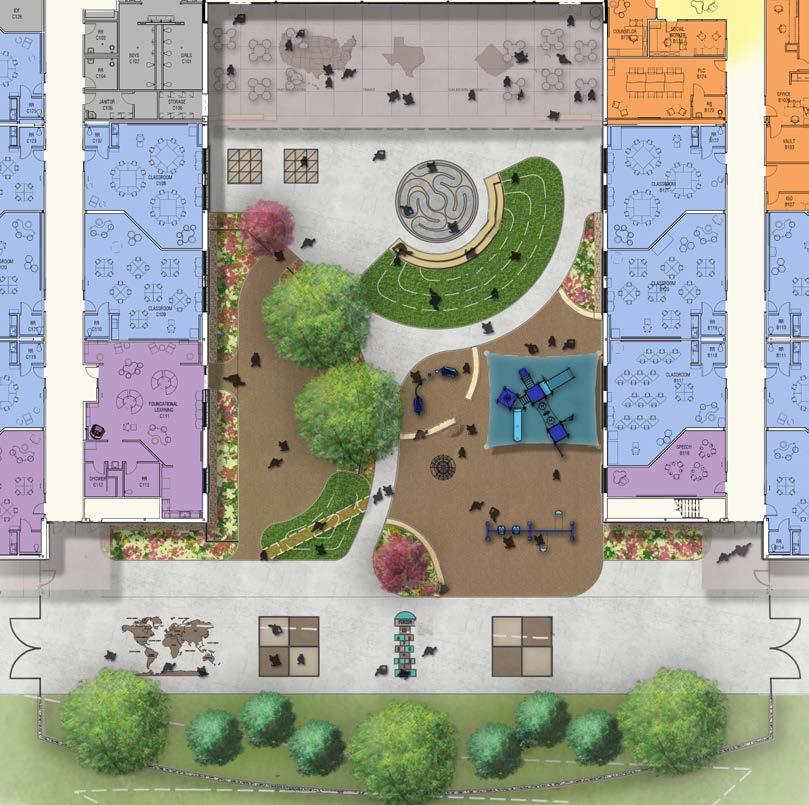

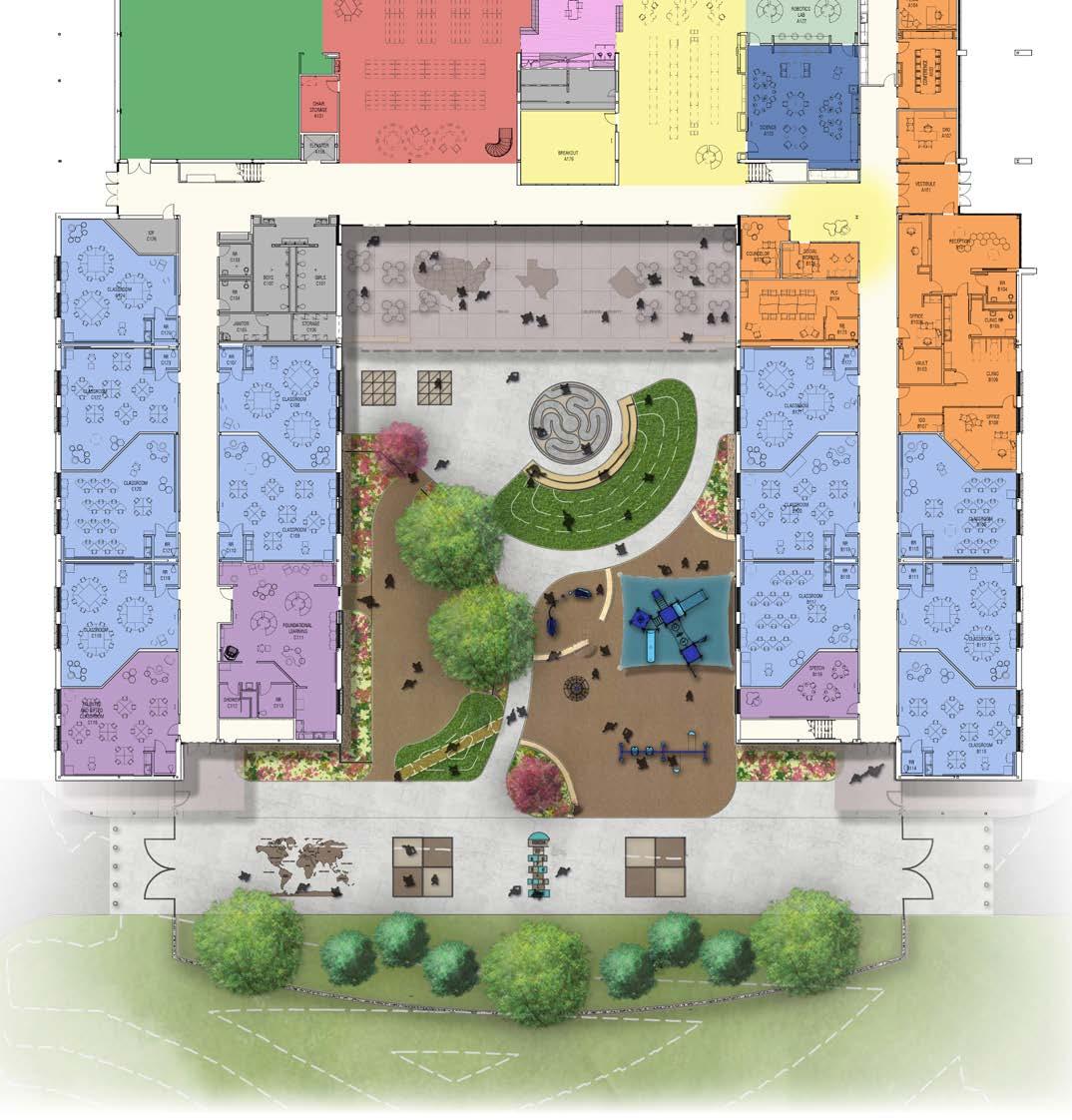
ATHLETICS
ATHLETICS
The athletics program is intentionally designed to promote pride, sportsmanship, and perseverance while supporting intellectual, physical, and emotional balance. It encourages students to take healthy risks in pursuit of long-term goals, fostering discipline and resilience.

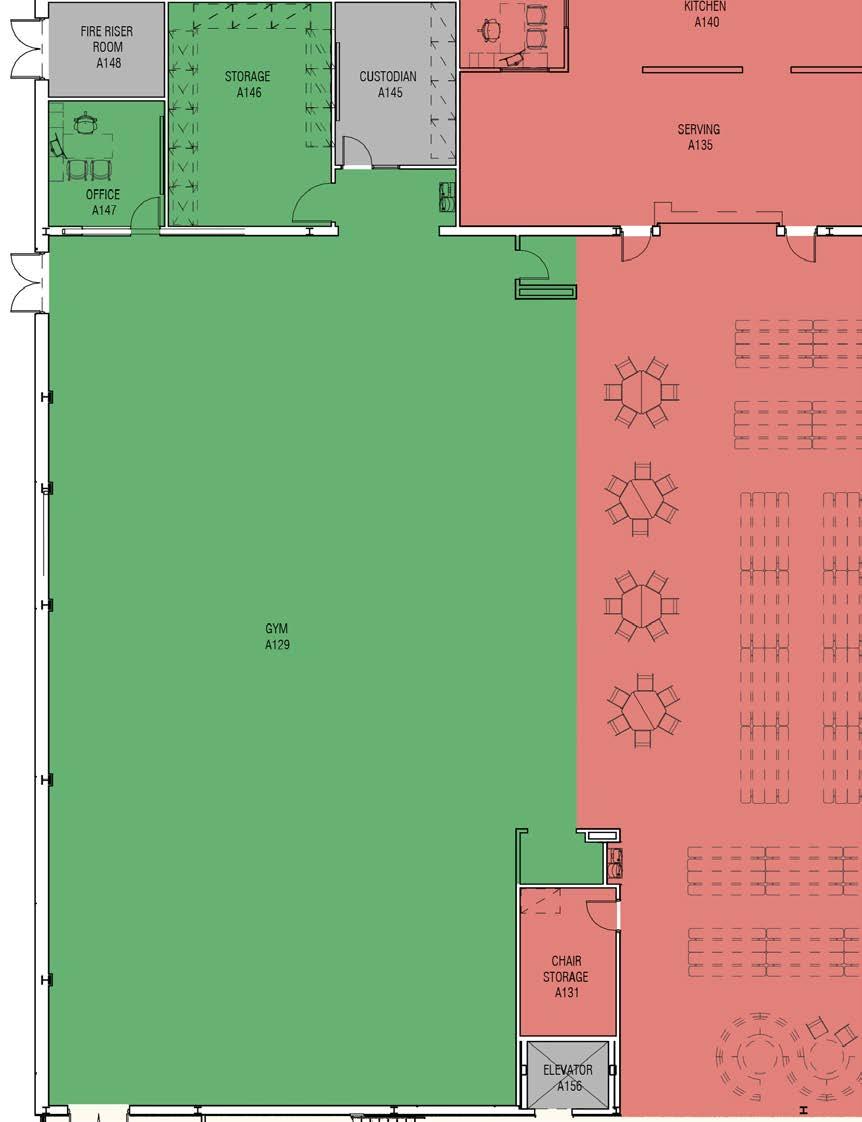
Gymnasium
Cafetorium
SAFETY & SECURITY
SAFETY & SECURITY
VLK’s mission is to deliver tailored safety and security solutions that support and enhance the built environment. The team is committed to proactively identifying and managing risk through comprehensive planning, expert insight, and ongoing education. By empowering clients with knowledge and collaborating closely with local first responders, VLK helps create strategies that prioritize protection, resilience, and improved quality of life, ultimately contributing to a safer, stronger community.
During the design of this campus, safety and security were foundational priorities. Specific features include:
• Clear line of sight from the administration area to the parking lot
• Sliding marker boards over classroom windows to enhance safety while maintaining instructional flexibility
• Balanced use of natural light with integrated blinds to support visibility and well-being
• Intentional separation of public and private zones within the building
• A secure, controlled entry vestibule for visitors
• Strategic interior layouts to maintain line-of-sight and visibility across common areas

BRAND IDENTITY
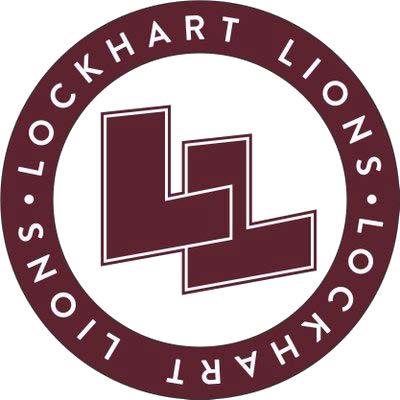
49%
64%
93
35
47
255
255
255


